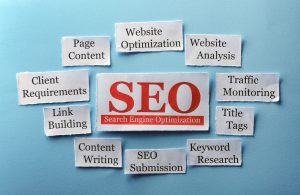Remember when we all scrambled to adapt after Google’s helpful content update dropped? Or how about the panic when AI Overviews started appearing in search results? If you’ve been in SEO for any length of time, you’ve experienced that sinking feeling when a major algorithm change catches you off guard.
But what if you could see these changes coming? What if you could prepare for algorithm updates, shifting user behaviors, and emerging ranking factors before your competitors even knew they were happening?
This isn’t science fiction—it’s the reality of AI-powered predictive analytics in SEO. And it’s changing how forward-thinking marketers approach search optimization in 2025.
The Crystal Ball Effect: How AI Anticipates SEO Changes
Traditional SEO has always been reactive. Google makes a change, we analyze the impact, and then we adjust our strategies accordingly. By the time we’ve adapted, we’ve already lost valuable traffic and rankings.
AI flips this model on its head by using predictive analytics to forecast SEO trends before they fully materialize.
“It’s like having a weather forecast for Google’s algorithm,” explains Marcus Chen, Chief Data Officer at a leading digital marketing agency. “Instead of looking out the window to see if it’s raining, AI lets us see the storm clouds forming days or even weeks in advance.”
This predictive capability comes from AI’s ability to analyze historical patterns across thousands of algorithm updates, monitor real-time ranking fluctuations, and identify correlations between seemingly unrelated data points.
Early Warning Systems: Detecting Algorithm Updates
Google typically rolls out algorithm updates gradually, testing them on small segments of searches before wider implementation. This creates subtle patterns that humans might miss but that AI can detect with remarkable accuracy.
Several AI tools now offer “algorithm early warning systems” that alert users to potential updates days before they’re officially announced or widely noticed.
“We’ve seen our AI detection system flag ranking volatility up to 72 hours before the SEO community starts discussing a possible update,” notes Sarah Johnson, product manager at an SEO software company. “That gives our users a critical head start on analyzing and adapting to changes.”
For a deeper understanding of how AI tools are transforming SEO workflows, check out our parent article on what makes AI tools so effective for SEO in 2025.
Trend Forecasting: Identifying Emerging Topics
Perhaps the most powerful predictive capability of AI is its ability to identify emerging search trends before they reach peak popularity.
Tools like BuzzSumo AI, Exploding Topics, and SEMrush’s Topic Research use sophisticated algorithms to analyze search volume patterns, social media mentions, and content engagement metrics to spot topics on the rise.
“The difference between good SEO and great SEO often comes down to timing,” explains David Park, an enterprise SEO consultant. “Creating content when a topic is already trending means fighting for visibility in a crowded space. But if you can identify and create content for emerging topics before they peak, you can establish authority early and ride the wave up.”
Predictive Keyword Intelligence: Beyond Volume and Difficulty
Traditional keyword research focuses on current metrics like search volume and keyword difficulty. But AI-powered tools are now offering predictive keyword intelligence that forecasts how these metrics will change over time.
These tools analyze historical search trends, seasonal patterns, and emerging user behaviors to predict which keywords will see significant volume increases and how keyword difficulty scores might change as competition increases.
“We’re no longer making decisions based solely on what keywords look like today,” says Emma Rodriguez, SEO Director at a global media company. “We’re planning content calendars around what our AI tools tell us these keywords will look like three months from now.”
Competitive Prediction: Anticipating Rival Strategies
Another fascinating application of AI in predictive SEO is competitive intelligence. Advanced tools can now analyze competitors’ content patterns, backlink acquisition rates, and technical changes to predict their likely next moves.
“It’s like a chess game where you can see your opponent’s next three moves,” explains Michael Zhang, founder of an AI-focused SEO agency.
For a comprehensive guide to implementing these predictive strategies, check out our main article on how to boost your rankings with AI tools for SEO productivity.
The Human Element: Why AI Prediction Still Needs Human Insight
Despite these impressive capabilities, AI prediction isn’t infallible. The most successful approaches combine AI’s data-processing power with human strategic thinking and industry expertise.
“AI can tell you what patterns suggest will happen next, but it can’t fully account for the human decisions driving those patterns,” cautions Dr. Lisa Chen, who specializes in AI applications in marketing.
Conclusion: The Predictive Advantage
As we move further into 2025, the gap between reactive and predictive SEO approaches will continue to widen. Organizations that leverage AI’s predictive capabilities gain a significant competitive advantage—they’re preparing for the future while competitors are still catching up to the present.
The question isn’t whether AI can predict SEO trends before they happen—it’s whether you’ll use these predictions to stay ahead of the curve or be left scrambling to adapt after changes have already occurred.

